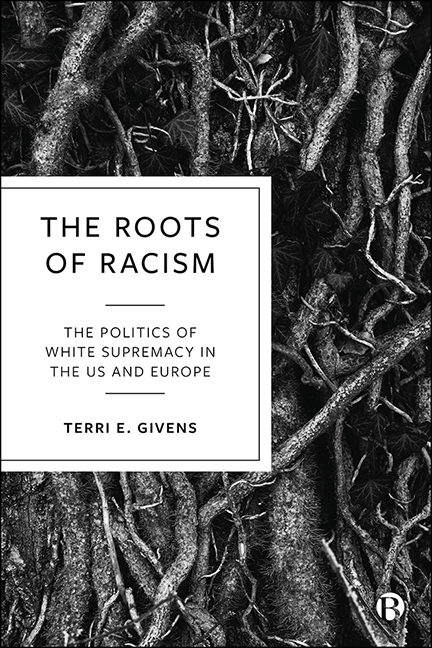Book contents
- Frontmatter
- Dedication
- Contents
- Preface
- 1 Introduction: Structural Racism is the Problem of the 21st Century
- 2 Political Science, International Relations, and the Normalization of White Supremacy
- 3 The Social and Geographical Construction of Race: A Transatlantic History
- 4 Ties that Bind: Slavery and Colonialism
- 5 Post-War Transitions: The Conflation of Immigration and Race
- 6 Immigration, Race, and Citizenship
- 7 From the Civil Rights Movement to Black Lives Matter
- 8 Party Politics, the Radical Right, and Race in the 21st Century
- 9 Elections, Protest, and Insurrection
- 10 Conclusion: Finding a Path Forward
- References
- Index
5 - Post-War Transitions: The Conflation of Immigration and Race
Published online by Cambridge University Press: 15 September 2022
- Frontmatter
- Dedication
- Contents
- Preface
- 1 Introduction: Structural Racism is the Problem of the 21st Century
- 2 Political Science, International Relations, and the Normalization of White Supremacy
- 3 The Social and Geographical Construction of Race: A Transatlantic History
- 4 Ties that Bind: Slavery and Colonialism
- 5 Post-War Transitions: The Conflation of Immigration and Race
- 6 Immigration, Race, and Citizenship
- 7 From the Civil Rights Movement to Black Lives Matter
- 8 Party Politics, the Radical Right, and Race in the 21st Century
- 9 Elections, Protest, and Insurrection
- 10 Conclusion: Finding a Path Forward
- References
- Index
Summary
The development of the idea of race was mainly associated with people of African descent (in conjunction with the development of Whiteness) up until the late 1800s. As immigration policy developed in the US and Europe, a new era of racialization would begin. The conflation of immigration and race is often seen through the impact of immigration policies. For example, the first restrictions on immigration in the US were the Chinese exclusion acts passed between 1882 and 1888 (Givens et al, 2020). The racialization of different waves of immigrants after the US Civil War is echoed in the racialization of ethnic and religious minorities who migrated to Europe after World War II.
Although racism is often based on color in Europe, it is also important to look at issues of cultural racism (Modood, 2005, p 7). As Muslims have become more defined as a group, rather than as part of their respective nationalities and ethnicities, they have become the focus of restrictive immigration policies, punitive integration measures, and citizenship tests designed to test for “anti-liberal” values. Although much attention goes to the issue of Muslims in Europe, many groups face issues of racism and political exclusion. The basis for discrimination is often perceived race, as well as religion and culture. These perceptions lead to policies that impact the ability of immigrants to not only enter and settle in a country, but also whether they can thrive, as noted by Castles et al: “Immigration policies have consequences for immigrants’ future status. Policies designed to keep migrants in the status of temporary mobile workers make it likely that settlement will take place under discriminatory conditions … Visible differences – for instance dark skin color or Islamic dress – can attract suspicion and social exclusion” (Castles et al, 2014, p 271).
In this chapter I focus on three critical transitions that had a major impact on transatlantic race relations. The first was the early 1900s and the era after the Civil War which would define the ongoing inequalities for African Americans and the first race-based restrictive immigration policies in the US.
- Type
- Chapter
- Information
- The Roots of RacismThe Politics of White Supremacy in the US and Europe, pp. 62 - 74Publisher: Bristol University PressPrint publication year: 2022



